Dylan Woods
Member
- Messages
- 1
- Location
- Sheringham, UK
Hello forum,
I am seeking some advice in relation to internal damp problems at my in-laws house on the Norfolk coast.
The house is around 150 years old, end of terrace, solid masonry walls with a stone flint exterior, which is painted white externally on 2 of the 3 elevations.
The house was refurbished around 10 years ago, at which point internal dry lining was installed on some of the internal walls but not all.
There are two separate areas in the house where the damp is most prevalent and I am seeking some advice as to what might be causing it.
The house does not have a bathroom extractor fan or any passive background means of ventilation such as trickle vents, but as a house is used infrequently for a few days every 3-4 weeks, so not occupied all of the time.
Damp Area No1 (see photos below)
Damp visible on ground and first floor level on one external wall.
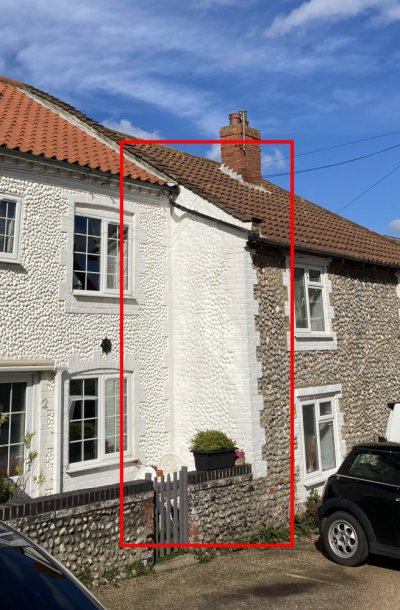
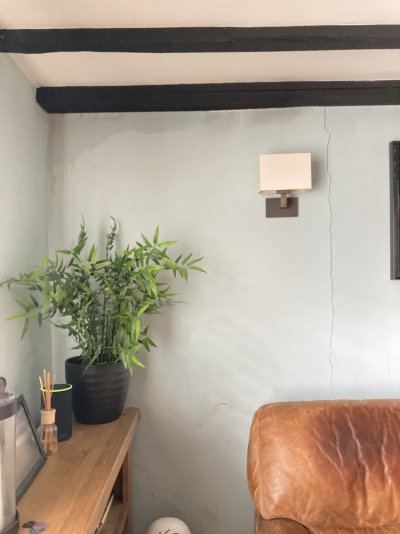
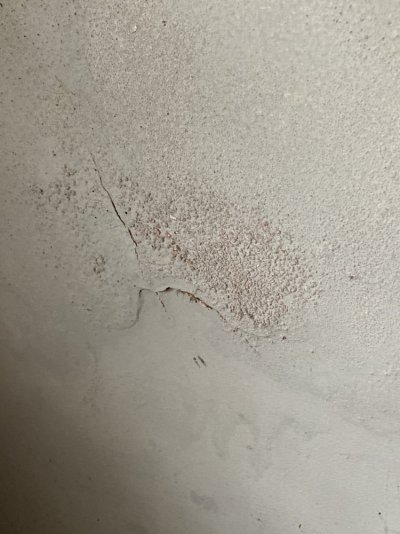
Damp Area No2 (see photos below)
These damp patches are located on walls that are above external ground level – see external photo showing internal floor level in blue and damp in red.
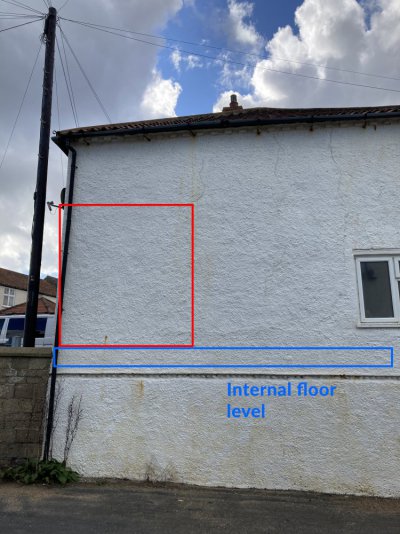
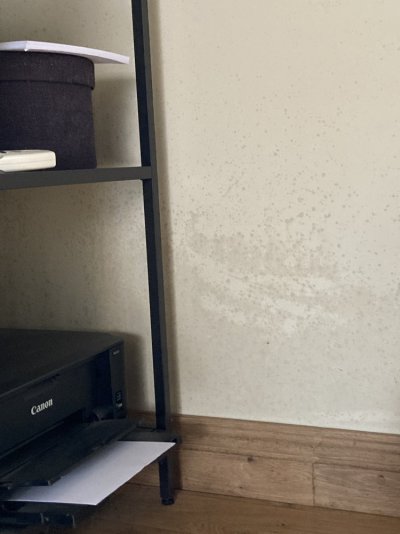
I have suggested to in-laws that they should install some background ventilation and get appropriate extractor fans, however I think the problem is more serious that this given the varying types of damp.
Any help or advice much appreciated and thank you in advance.
Best,
Dylan
I am seeking some advice in relation to internal damp problems at my in-laws house on the Norfolk coast.
The house is around 150 years old, end of terrace, solid masonry walls with a stone flint exterior, which is painted white externally on 2 of the 3 elevations.
The house was refurbished around 10 years ago, at which point internal dry lining was installed on some of the internal walls but not all.
There are two separate areas in the house where the damp is most prevalent and I am seeking some advice as to what might be causing it.
The house does not have a bathroom extractor fan or any passive background means of ventilation such as trickle vents, but as a house is used infrequently for a few days every 3-4 weeks, so not occupied all of the time.
Damp Area No1 (see photos below)
Damp visible on ground and first floor level on one external wall.
- The external photo highlights the position of the damp externally.
- The damp patches are visible at ground and first floor.
- Damp at high level and low level, both wet looking walls and blistering.
- This area of wall is plaster on solid wall (not dry lined) and I am unsure if it is lime or cement based plaster.
- The damp is blistering the plaster.
- The ground floor is partially subterranean but only a few hundred mm I think.
- The gutter apparently sometime overflows due to being connected to the neighbours, however I am now sure this would cause wall damp and apparently the roof flashings have been inspected and are in good order.



Damp Area No2 (see photos below)
These damp patches are located on walls that are above external ground level – see external photo showing internal floor level in blue and damp in red.
- These walls are dry lined.
- Generally damp at low level with damp patches and ‘spots’.


I have suggested to in-laws that they should install some background ventilation and get appropriate extractor fans, however I think the problem is more serious that this given the varying types of damp.
Any help or advice much appreciated and thank you in advance.
Best,
Dylan
